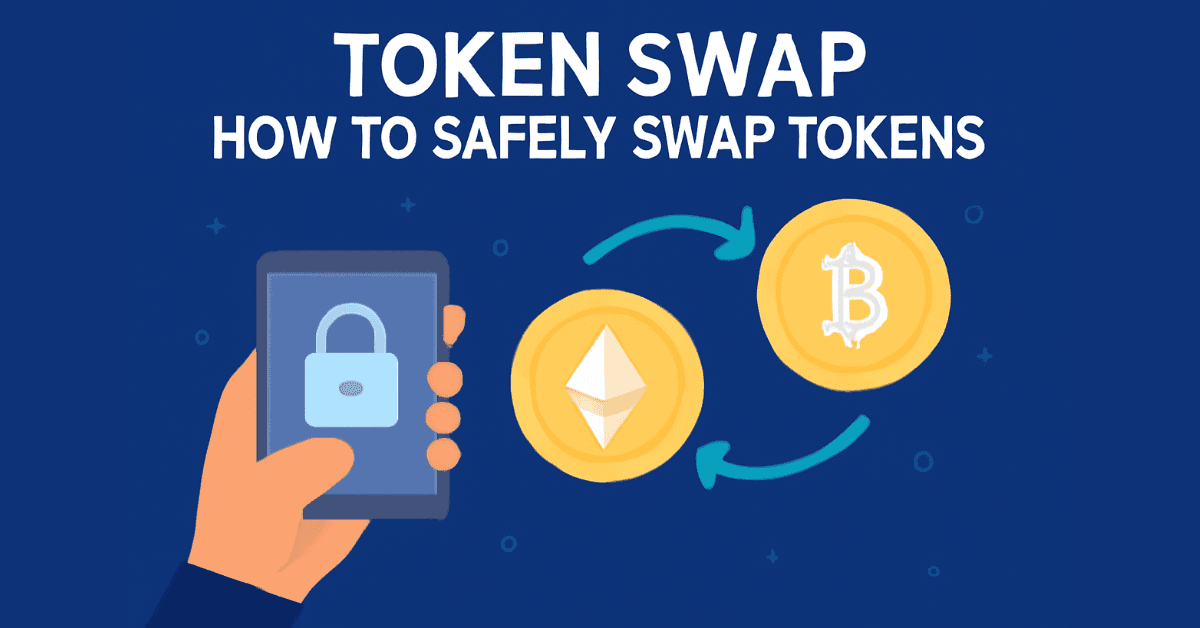
Token Swap: How to Safely Swap Tokens
Token Swap refers to the process of converting one type of token to another or swapping between different tokens across blockchains. This is an essential part of asset management in the crypto world and helps blockchain projects optimize their ecosystems.
1. Understanding Token Swap in Crypto
Token Swap is not just about converting between tokens; it also includes cases such as blockchain migration and asset swapping on decentralized exchange platforms (DEX).
1.1 Blockchain Migration
When a project needs to move from an old blockchain to a new one, users must perform a token swap to preserve the value of their assets. For instance, TRON started with ERC-20 tokens on Ethereum, but after launching its own blockchain in 2018, they swapped all TRX tokens from Ethereum to the TRON blockchain.
1.2 Swapping on DEX
Unlike centralized exchanges (CEX), decentralized exchanges (DEX) like Uniswap or PancakeSwap allow users to swap tokens directly between different cryptocurrencies without intermediaries. This offers many benefits, such as the freedom to trade and access to new tokens.
2. Benefits and Risks of Token Swap
2.1 Benefits of Token Swap on DEX
-
Decentralization: Users don't need to provide personal information or rely on intermediaries.
-
Access to new tokens: DEX allows users to trade tokens that haven't been listed on CEX.
-
Higher security: Users retain control of their assets in their personal wallets, avoiding risks from centralized exchanges.
2.2 Risks
-
Liquidity risks and slippage: Tokens with low liquidity can experience slippage.
-
Risk of scams: "Rug pull" projects can cause users to lose their assets.
-
Smart contract issues: If a contract is not properly audited, it may contain critical security vulnerabilities.
3. Cross-Chain Token Swap
Cross-chain swap allows users to exchange assets between different blockchains without relying on centralized exchanges. This process often uses cross-chain bridges like Thorchain or Stargate.
3.1 Benefits of Cross-Chain Swap
-
Decentralization: Transactions occur directly on the blockchain without intermediaries.
-
Reduced transaction fees: Users only pay gas fees instead of exchange management fees.
3.2 Risks
-
Not all blockchains support it: Some blockchains don't support cross-chain swaps.
-
Higher security risks: Cross-chain bridges are often targeted in hacks, as seen in major 2022 attacks.
4. Token Swap Process
The process for performing token swaps may vary depending on the platform. Below is the general process for Token Swap, Cross-chain Swap, and DEX:
4.1 Token Swap on New Blockchain
-
Project announcement: Users will receive notifications and instructions on how to participate in the swap.
-
Create a new wallet: If needed, users will create a new wallet on the destination blockchain.
-
Send old tokens: Transfer old tokens to the designated wallet or address.
-
Lock old tokens: Old tokens will be locked to prevent them from being used after the swap.
-
Receive new tokens: New tokens will be distributed to users' wallets.
4.2 Swapping on DEX
-
Connect wallet: Link a wallet, such as MetaMask, to the DEX.
-
Choose tokens: Select the tokens to swap.
-
Confirm the transaction: Confirm the transaction, and the smart contract will automatically execute the swap.
4.3 Cross-Chain Swap
-
Connect wallet: Link the wallet to a cross-chain bridge platform.
-
Choose token and destination blockchain: Select the token and blockchain for the swap.
-
Confirm the transaction: Confirm the swap, and the smart contract will execute the process.